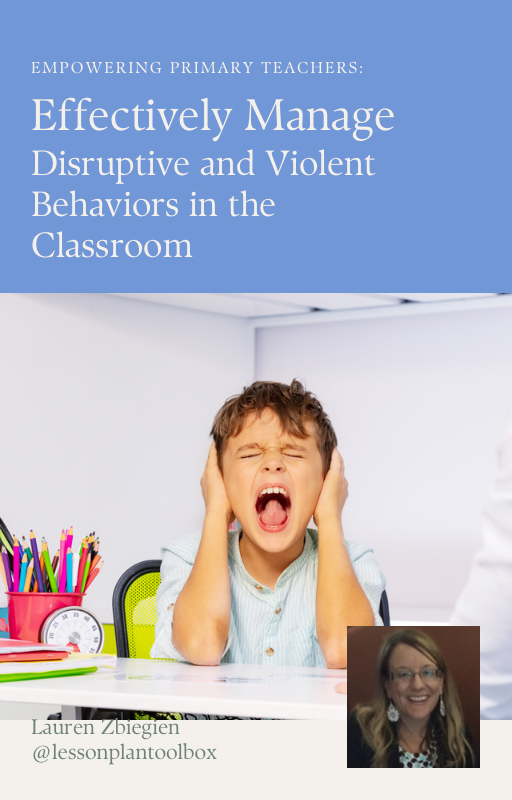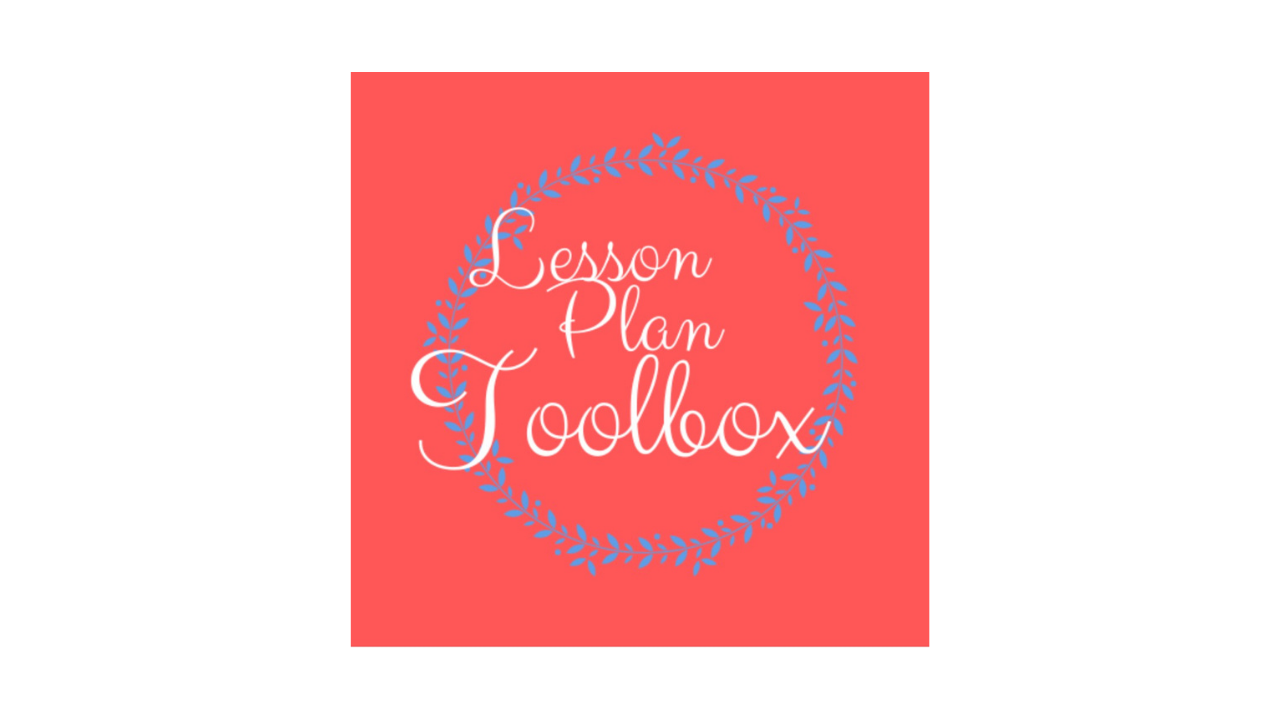
Handling a Disgruntled Parent for Primary Teachers
Click this link to watch the YOUTUBE version of this post.
Welcome to our yearlong series on Classroom Management by Design for Primary Teachers. Each week we will give you a new piece to the classroom management puzzle to have in place when you need it this school year. Think of it as a Lego kit just waiting to be built.
Classroom Management by Design for Primary Teachers: Handling a Disgruntled Parent: A Guide for Primary Teachers

Introduction:
As primary teachers, we know that part of our job is not just to educate children, but to build relationships with their families as well. At times, however, those relationships can be tested when a parent becomes disgruntled. Whether it's due to a misunderstanding, differing perspectives on education, or external stressors, handling an upset parent can feel like walking on a tightrope. Yet, managing these interactions effectively is crucial—not only for the child’s well-being but also for maintaining a positive learning environment.
In this blog post, we'll explore some practical, research-based strategies for navigating conversations with disgruntled parents and turning potentially tense situations into productive partnerships.
1. Common Reasons for Parental Discontent
Understanding the root causes of parental dissatisfaction is the first step in handling conflicts effectively. Parents may express frustration or anger for a variety of reasons, often related to their child’s well-being or academic performance. Some of the most common triggers include:
Time Constraints and Guilt: Many parents juggle demanding jobs or single-parenting responsibilities, leaving them feeling guilty about the amount of time they spend with their children. This guilt can heighten emotional responses when issues arise at school.
Communication Breakdowns: Misunderstandings about school policies, grading, or classroom behavior can lead to frustration. Parents may feel their concerns aren’t taken seriously or that their voices aren’t heard.
Emotional Responses to Their Child’s Experiences: A parent’s instinct to protect their child can result in emotional reactions, especially when they feel their child has been treated unfairly, bullied, or overlooked in some way.
Control Issues and Differing Values: Conflicts often arise from parents feeling they are losing control over their child’s education. Differences in values—such as approaches to discipline or homework—can exacerbate these feelings.
External Stressors: Family stressors, including financial strain, health issues, or personal crises, can intensify parental reactions to school-related issues, turning minor concerns into larger confrontations.
Knowing the underlying reasons for a parent’s frustration allows you to approach the situation with empathy and tailor your response accordingly.
2. Managing Emotional Responses: The Role of Emotional Intelligence
When dealing with disgruntled parents, emotional intelligence (EI) becomes one of your most powerful tools. Emotional intelligence involves being aware of your own emotions, recognizing emotions in others, and using this understanding to guide interactions. In high-stakes conversations with upset parents, these skills are invaluable.
a) Active Listening
One of the most effective ways to de-escalate tension is to listen—really listen. Parents want to feel heard and validated, even when you don’t agree with their perspective. Active listening involves:
Making eye contact and using non-verbal cues (such as nodding) to show that you’re engaged.
Reflecting back what the parent is saying to confirm your understanding. For example, “I hear you’re concerned that Emma is struggling with math, and you feel the current strategies aren’t working.”
Avoiding interruptions and waiting for the parent to finish speaking before responding.
b) Empathy and Validation
Acknowledging a parent’s emotions—even if you don’t agree with their interpretation—can go a long way in building trust. Simply saying, “I understand that this is a frustrating situation for you,” helps to validate their feelings and reduces the chances of escalation.
Lesser-Known Secret: Research shows that parents who feel understood are more likely to engage in problem-solving discussions, rather than focusing on blame.
c) Maintaining Calm and Composure
Your own emotional state can greatly influence the outcome of the conversation. If you become defensive or upset, it can exacerbate the situation. Take a deep breath, stay calm, and focus on the child’s best interests. Use neutral language and avoid personalizing the conflict.

3. Effective Communication Strategies
Clear, open communication is essential in resolving conflicts with disgruntled parents. Below are key communication strategies that can help turn difficult conversations into collaborative problem-solving sessions.
a) Open and Honest Dialogue
Creating a safe space where both parties feel comfortable expressing their concerns is crucial. Encourage parents to share their thoughts openly and ensure that you listen without judgment. This builds trust and fosters a more constructive dialogue.
Example Language:
“I want to understand your perspective so we can figure out the best way to support Jason moving forward.”
b) Setting Clear Expectations and Boundaries
Setting clear expectations for how conversations will be conducted is important, particularly if emotions run high. This includes politely but firmly establishing boundaries to keep the discussion productive.
Example Language:
“I understand you’re feeling upset, and I want to make sure we find a solution. Can we both agree to focus on what we can do to help Michael thrive?”
c) Documenting and Following Up
After a challenging conversation, be sure to document the key points and any action items agreed upon. Following up with the parent reinforces accountability and ensures that both parties remain aligned in their efforts to support the child.
Follow-Up Example:
“Thank you for meeting with me yesterday. I wanted to recap that we agreed to check in weekly on Sarah’s progress with her reading assignments, and I will provide you with updates every Friday.”
4. Conflict Resolution Techniques
Sometimes, despite your best efforts, tensions will still rise. In these moments, effective conflict resolution strategies can help diffuse the situation and keep the focus on finding solutions.
a) Collaborative Problem-Solving
Instead of dictating solutions, involve parents in the decision-making process. Collaborative problem-solving ensures that both parties feel invested in the outcome. Ask the parent for their input and explore potential solutions together.
Example Language:
“Let’s brainstorm some ways we can support Jacob at home and in the classroom to help with his focus. What have you noticed works for him at home?”
b) Mediation and External Support
In more complex or emotionally charged situations, mediation from a neutral third party—such as a school counselor or administrator—can help facilitate the conversation. The mediator ensures that both parties are heard and helps guide the discussion towards resolution.
c) Identifying the Root Cause
Sometimes, the issue being presented is not the true cause of the parent’s frustration. Use probing questions to uncover any underlying issues that may be contributing to the conflict. Addressing the root cause—whether it’s a misunderstanding about expectations, an unaddressed learning difficulty, or external stress—can prevent future conflicts from arising.

5. Building Positive Parent-Teacher Relationships
The best way to handle disgruntled parents is to build a strong, positive relationship with them from the start. This not only helps to prevent conflicts but also makes it easier to resolve issues when they arise. Here are some proactive steps you can take to foster these relationships:
a) Regular Communication
Don’t wait for parent-teacher conferences to communicate with families. Regular updates about a child’s progress—whether through emails, newsletters, or a quick phone call—build trust and show that you are invested in the child’s success.
b) Get to Know the Parents
Take the time to understand the parents’ backgrounds, concerns, and values. This helps you approach conversations from a place of understanding, and shows parents that you see them as partners in their child’s education.
c) Create a Welcoming Atmosphere
Whether in person or through virtual platforms, creating a welcoming, non-threatening atmosphere for parents helps to set the tone for productive communication. When parents feel welcome and respected, they are more likely to approach you with concerns rather than complaints.
6. Continuous Improvement and Support
As educators, it’s important to recognize that handling disgruntled parents is an ongoing learning process. Seeking out professional development opportunities focused on emotional intelligence, communication, and conflict resolution can enhance your ability to navigate these situations effectively.
a) Self-Reflection
After each difficult interaction, take time to reflect on what went well and what could be improved. This allows you to continuously refine your approach and develop stronger relationships with parents.
b) Seeking Support from Colleagues
Sometimes, having a trusted colleague or mentor to debrief with can provide new insights or approaches for handling challenging parents. Don’t hesitate to seek support from your professional community when you need it.

Conclusion: Turning Conflict into Collaboration
Handling a disgruntled parent is never easy, but with the right approach, these challenging conversations can lead to stronger relationships and better outcomes for the student. By approaching conflicts with empathy, clear communication, and a focus on collaborative problem-solving, teachers can turn tense moments into opportunities for partnership.
Remember: at the heart of every difficult conversation is a shared goal—the success and well-being of the child. When parents and teachers work together, even the most challenging situations can lead to positive, lasting outcomes for the student.
SHOCK-TOBER!
If classroom management has you a going a little bonkers or even worse is stressing you out to the MAX, then we would LOVE to invite to the
MASTERING CLASSROOM MANAGEMENT for the Primary Teacher Membership for FREE the ENTIRE month of OCTOBER!
You will have the chance to ask all of your classroom management questions and receive real time feedback on how to implement strategies in the classroom.
Primary teachers have our hearts and we can't wait to see you inside the membership!
DID YOU KNOW…
Did you know I organize a FREE Facebook Group for Mastering Classroom Management? We are gearing up for our school year quarter sessions, so if you’re looking for a simple way to improve your classroom management join the already 200+ teachers that have signed up: Mastering Classroom Management Facebook Group
Your ebook GIFT: Empowering Primary Teachers: Effectively Manage Disruptive and Violent Behaviors in the Classroom

FINALLY…
If you enjoyed the tips in this post, you might also enjoy this series of videos Classroom Management by Design for Primary Teachers:
Mastering Parent-Teacher Conferences
The Power of Silence: A Step-By-Step Approach to Incorporating Silence in Your Classroom
The Power of Silence in the Classroom
The Power of Your Words in the Classroom
Mastering Conflict Resolution in the Primary Classroom
Don’t forget to follow us over on Instagram!
Teach~Relax~Repeat
Lauren

